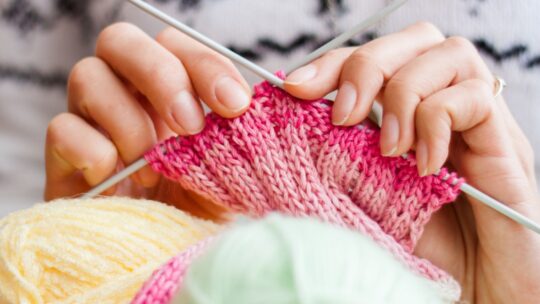
Selecting the correct supplements for your mare can be hard because there are numerous choices. If you do not know what you are doing, you could buy her something that does not meet her needs or, even worse, could hurt her.
For her health and performance, you need to make sure your mare gets the right nutrients. In this article, you will explore seven key factors to consider when buying supplements for your mare.
-
Ingredient Quality and Sourcing
When buying supplements for mares, it’s important to check the quality of the ingredients. High-quality supplements should use natural, safe, and well-sourced ingredients.
Look for supplements that list the origin of their ingredients and ensure they come from trusted suppliers. If the supplement is made from synthetic or poorly sourced ingredients, it may not provide the same health benefits.
Always choose products that prioritize clean, pure ingredients to ensure the best results for your mare’s health.
-
Specific Nutrient Content
Supplements for mares should provide the right nutrients needed for their health. This could include vitamins, minerals, and amino acids that help with joint health, coat quality, or reproductive health.
Check the label for clear information about the nutrient content to ensure the supplement addresses your mare’s specific needs.
It’s also helpful to know if the supplement targets any health concerns, such as improving digestion or boosting energy. This way, you can pick the right supplement that fits your mare’s current health goals.
-
Formulated for Mares’ Needs
Not all horse supplements are the same, and some may be designed for general horse health. Make sure the supplement you’re considering is specifically formulated for mares.

Female horses have unique health needs, such as hormonal support or reproductive care, which might not be addressed in a general supplement. Check the label or description to see if it mentions supporting mare-specific issues like fertility, pregnancy, or milk production.
-
Dosage and Concentration
Check the recommended dosage to ensure it matches your mare’s weight and needs. A supplement with too low a dose may not have the desired effect, while too high a dose could cause side effects.
Pay attention to the concentration of active ingredients in the supplement. Some products offer high-potency formulas that require smaller amounts, while others may need larger doses to achieve the same benefits.
-
Brand Reputation and Evaluation
The brand’s reputation can tell you a lot about the quality of the supplement. Research well-known brands with positive reviews from horse owners and veterinarians.
Read customer feedback to see if the supplement worked for other mares and whether it met expectations. Brands with a history of making effective and safe products are often more reliable.
-
Additives and Fillers
Some supplements contain additives or fillers that don’t provide any health benefits and can even be harmful over time. Check the label to see if the supplement includes unnecessary ingredients like artificial colors, flavors, or preservatives.

These fillers may be used to reduce cost or improve taste, but they don’t support your mare’s health.
-
Veterinarian Approval
A vet can help you decide if the supplement is appropriate for your mare’s specific health needs. They can also recommend trusted brands and products that are safe for your horse.
Veterinarian-approved supplements are often formulated based on scientific research, which helps ensure they’re both safe and effective. Always check for endorsements or recommendations from professionals to guarantee you’re providing the best care for your mare.
Achieve Optimal Mare Health and Performance
Whether you’re managing a mare’s reproductive health or enhancing her performance, the right supplement can make all the difference. Remember that there are natural and effective alternatives like Alternative to Regu-mate for mares to support hormonal balance without relying on synthetic solutions. With the right supplement, you’ll set your mare up for a healthier and happier life!




 Lupus management without prescriptions?
Lupus management without prescriptions?







 Becoming a mom for the first time is a life-changing experience filled with love, excitement, and a touch of nervousness. One of the biggest priorities for new moms is creating a safe and nurturing space for their children. Physical safety and emotional security are key to helping your child thrive in their early years. Here’s a comprehensive guide to help create a safe space for your child.
Becoming a mom for the first time is a life-changing experience filled with love, excitement, and a touch of nervousness. One of the biggest priorities for new moms is creating a safe and nurturing space for their children. Physical safety and emotional security are key to helping your child thrive in their early years. Here’s a comprehensive guide to help create a safe space for your child.


 Knitting has long been seen as a craft for women, with its soft yarns and delicate stitches often associated with cosy blankets and cute baby clothes. However, in recent years, knitting for men has gained popularity, and with good reason. Whether you’re knitting for a partner, a friend, or a family member, creating something by hand is a meaningful gesture that goes beyond a simple gift. Let’s explore why knitting for men is more meaningful than you might think.
Knitting has long been seen as a craft for women, with its soft yarns and delicate stitches often associated with cosy blankets and cute baby clothes. However, in recent years, knitting for men has gained popularity, and with good reason. Whether you’re knitting for a partner, a friend, or a family member, creating something by hand is a meaningful gesture that goes beyond a simple gift. Let’s explore why knitting for men is more meaningful than you might think.










 The signs of menopause can be bothersome and disruptive. Who wouldn’t desire relief after going through hot flashes, night sweats, and vaginal dryness? Fortunately, there are numerous treatment options for menopause. Estrogen supplements are frequently used and proven to be effective.
The signs of menopause can be bothersome and disruptive. Who wouldn’t desire relief after going through hot flashes, night sweats, and vaginal dryness? Fortunately, there are numerous treatment options for menopause. Estrogen supplements are frequently used and proven to be effective.


 Balancing the demands of motherhood and personal health can be challenging. For many moms, improving reproductive health often takes a backseat due to busy schedules and other priorities. However, understanding and supporting your reproductive health doesn’t have to be complicated.
Balancing the demands of motherhood and personal health can be challenging. For many moms, improving reproductive health often takes a backseat due to busy schedules and other priorities. However, understanding and supporting your reproductive health doesn’t have to be complicated.


























